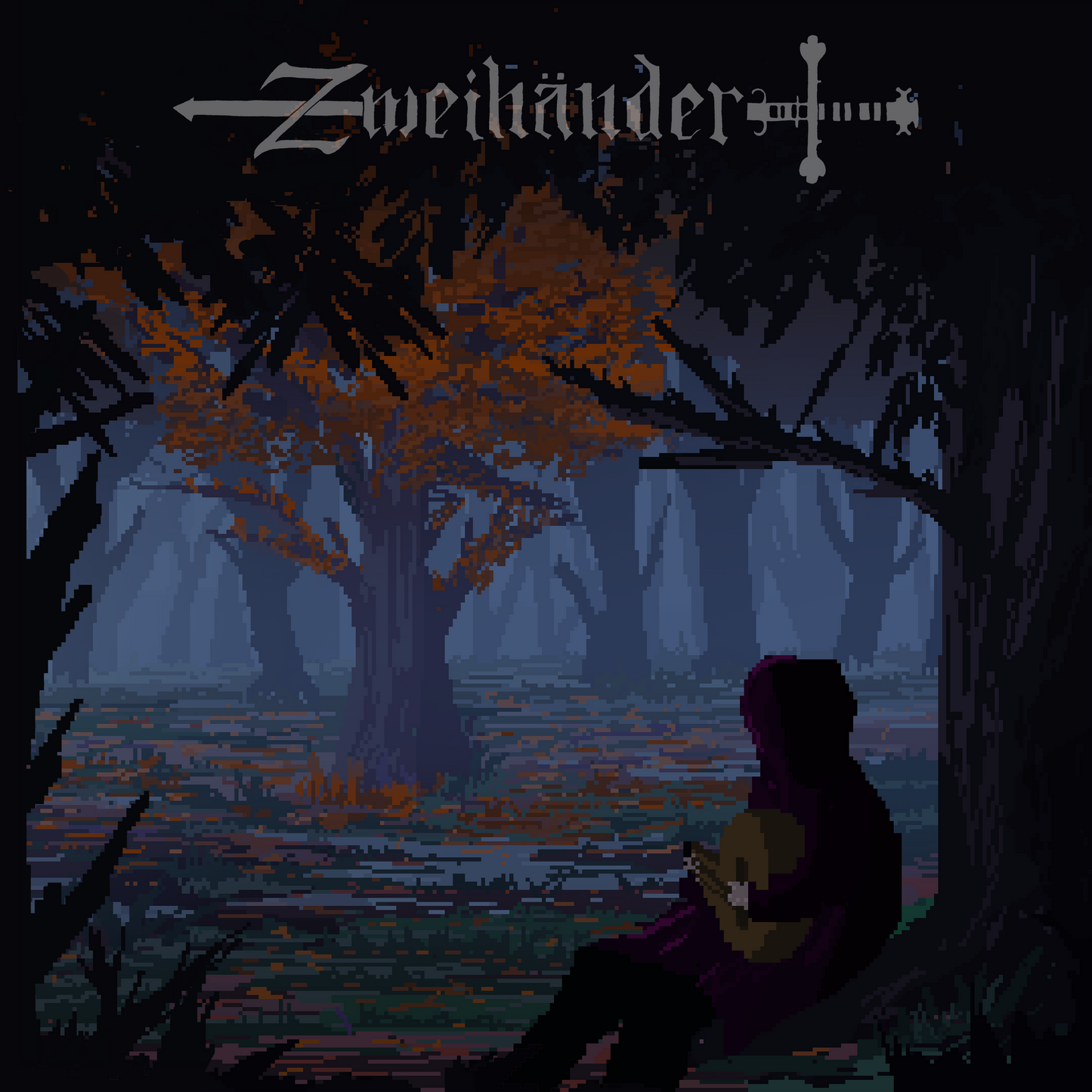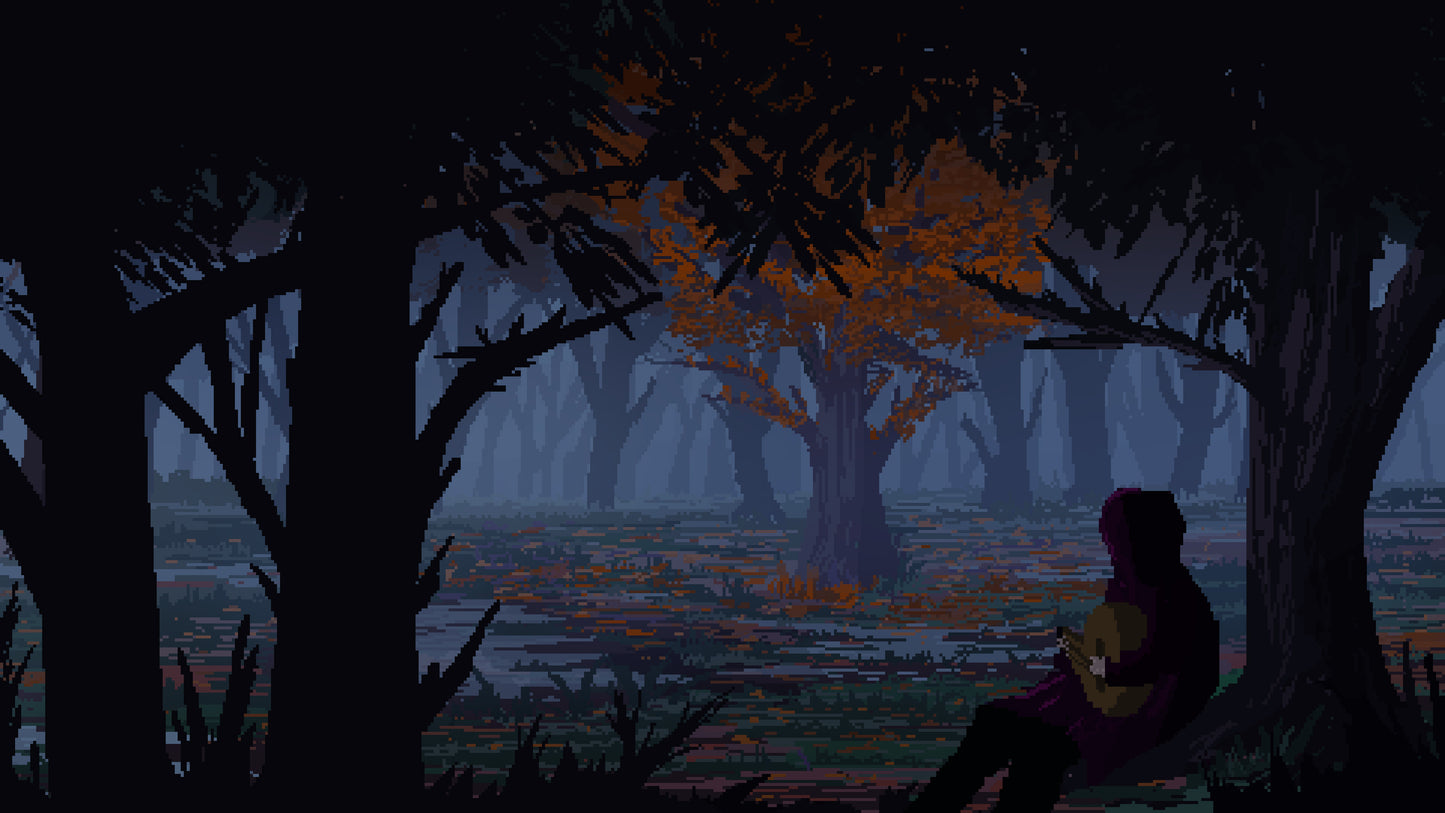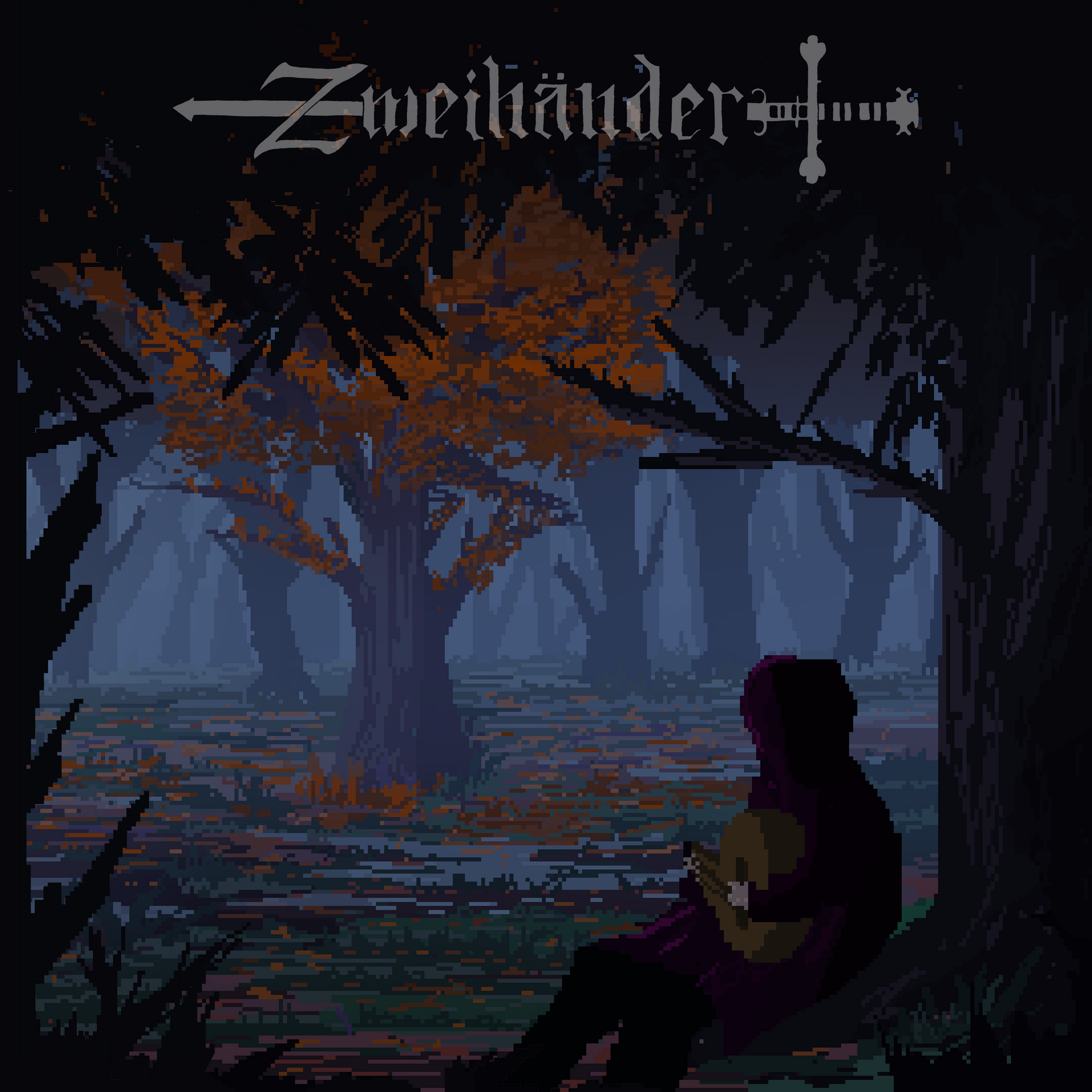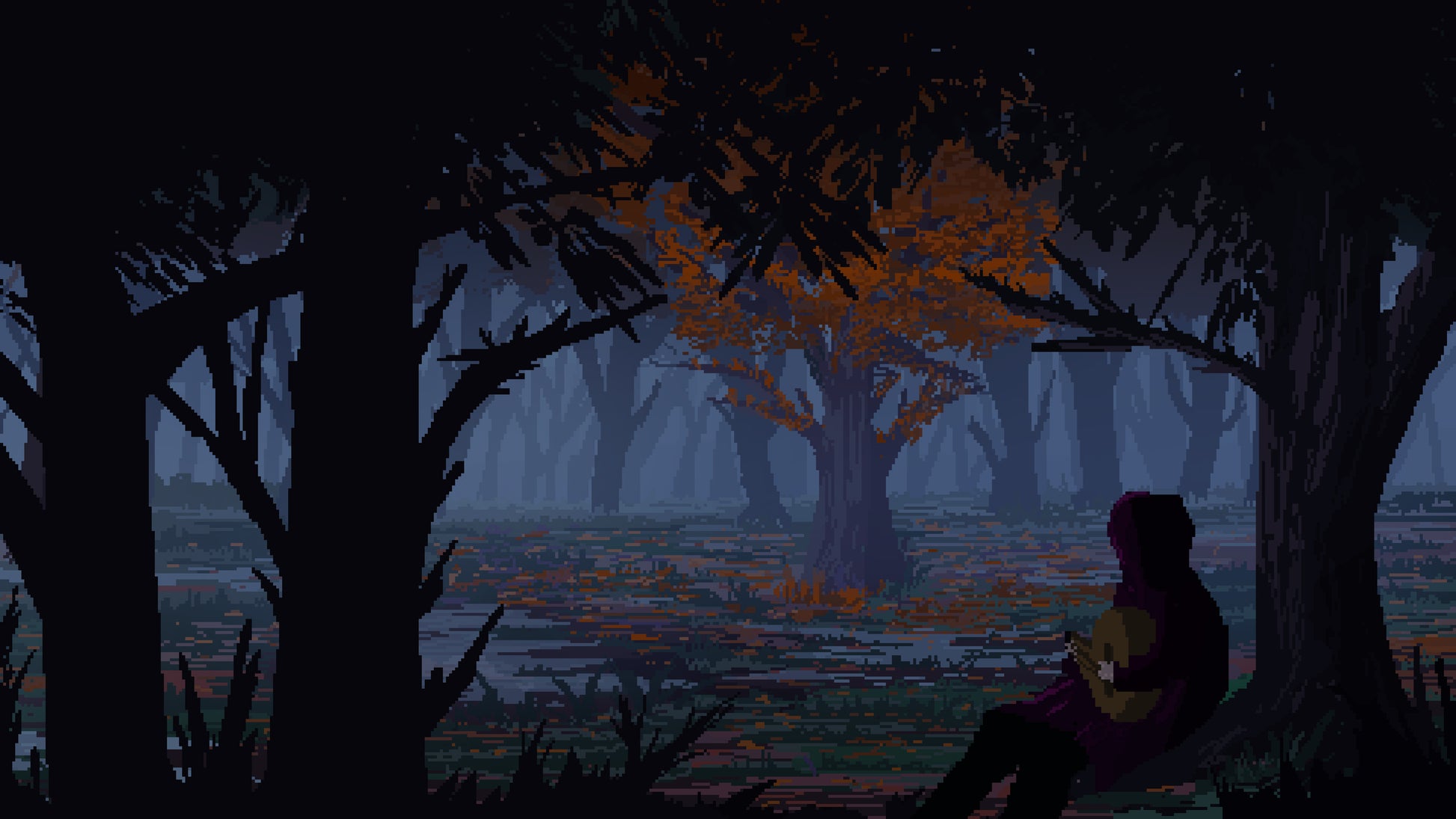Zweihänder
Zweihander - Primeval - 2021
Zweihander - Primeval - 2021
Regular price
$6.66 USD
Regular price
Sale price
$6.66 USD
Unit price
per
Shipping calculated at checkout.
Couldn't load pickup availability
DOS, NES, and SNES melodies were constantly running through my 12-year-old brain. Now that I'm older I've been able to go back and fill in the gaps. Recently I've been exploring the soundtracks from games and systems I never owned (especially the Sharp X68000 and the NEC PC-98). I've also been listening to a bit of dungeon synth... so you may hear a bit of everything in this album. It isn't designed to be any one thing, it's just the music I like to make. It's a tribute to those who crafted the soundtracks of our childhoods.
Let's take a journey. The album begins with a couple songs dedicated to the early days of DOS gaming. This may sound similar to the NES, but the typical Yamaha sound chips found in PC sound cards could be used in a greater variety of ways.
Then, in the 90's, midi became a thing and PC gaming music was drastically changed. You didn't have to rely on PSG/PCM anymore; you could use emulated instruments... many of these "instruments" had that distinct cheesy midi sound, but you could use them in interesting ways. The hardware had to support this, so you'd have your standard sound card plus midi. This is why you had to select separate sound devices for music and sound effects. The OPL sound chips could work to emulate these instruments using wav and FM synthesis... This had a really interesting, slightly buzzier sound, but it worked well.
Midi instruments were made as needed at first; there weren't any rules. Then, in the 90s, Roland released the SC-55 (Sound Canvas) and with it created a standard list of midi instruments. 00 was always Piano, 10 was glockenspiel, 37 was slap bass, etc. This allowed users to switch midi interfaces or sound banks and not change the song much. The Roland interface objectively produced the best sounds, but it was also an expensive accessory. I've used it a lot on this album. There was also general midi, adlib, etc. See if you can pick out the samples from the SC-55 and the adlib midi libraries.
Next, let's talk about the SNES/Super Famicom. Musically, it was a whole other animal. Instead of relying on PSG. FM, or midi sounds, Nintendo allowed developers to create sampled audio clips. These had to be extremely compressed, but it gave composers loads of options. They could create samples just for their game. For instance, Castlevania has dark organs, strings, choirs, etc. while Battletoads has chuggy guitars and such that were created specifically for those games. Beyond this, Nintendo embedded a default library of general sounds directly into the SNES. This gave the SNES music a signature sound that is still unique to this day. I've mixed these into songs that also feature some of the midi sounds. See if you can pick them out.
I'm a game music nerd more than a hardware nerd. So, while I may know about the Yamaha chips and Roland interfaces that were used to make all these sounds, I don't spend much time fussing with old gear and operating systems. This music was made from samples, VSTs, and emulated sounds. They are close, but not exactly what you would hear on the original hardware. I've also added some unrealistic reverb here and there. My goal isn't to recreate old music, but rather to fill you with nostalgic feelings while also pulling your ears in new directions. That mix of familiar and unknown is what I'm going for with this release.
This album was a challenge at first, because I'm used to composing faster music. Drums were the first instrument I learned, and I decided to create something without them this time. Hopefully these tracks provide something nostalgic and chill to listen to. Enjoy.
Let's take a journey. The album begins with a couple songs dedicated to the early days of DOS gaming. This may sound similar to the NES, but the typical Yamaha sound chips found in PC sound cards could be used in a greater variety of ways.
Then, in the 90's, midi became a thing and PC gaming music was drastically changed. You didn't have to rely on PSG/PCM anymore; you could use emulated instruments... many of these "instruments" had that distinct cheesy midi sound, but you could use them in interesting ways. The hardware had to support this, so you'd have your standard sound card plus midi. This is why you had to select separate sound devices for music and sound effects. The OPL sound chips could work to emulate these instruments using wav and FM synthesis... This had a really interesting, slightly buzzier sound, but it worked well.
Midi instruments were made as needed at first; there weren't any rules. Then, in the 90s, Roland released the SC-55 (Sound Canvas) and with it created a standard list of midi instruments. 00 was always Piano, 10 was glockenspiel, 37 was slap bass, etc. This allowed users to switch midi interfaces or sound banks and not change the song much. The Roland interface objectively produced the best sounds, but it was also an expensive accessory. I've used it a lot on this album. There was also general midi, adlib, etc. See if you can pick out the samples from the SC-55 and the adlib midi libraries.
Next, let's talk about the SNES/Super Famicom. Musically, it was a whole other animal. Instead of relying on PSG. FM, or midi sounds, Nintendo allowed developers to create sampled audio clips. These had to be extremely compressed, but it gave composers loads of options. They could create samples just for their game. For instance, Castlevania has dark organs, strings, choirs, etc. while Battletoads has chuggy guitars and such that were created specifically for those games. Beyond this, Nintendo embedded a default library of general sounds directly into the SNES. This gave the SNES music a signature sound that is still unique to this day. I've mixed these into songs that also feature some of the midi sounds. See if you can pick them out.
I'm a game music nerd more than a hardware nerd. So, while I may know about the Yamaha chips and Roland interfaces that were used to make all these sounds, I don't spend much time fussing with old gear and operating systems. This music was made from samples, VSTs, and emulated sounds. They are close, but not exactly what you would hear on the original hardware. I've also added some unrealistic reverb here and there. My goal isn't to recreate old music, but rather to fill you with nostalgic feelings while also pulling your ears in new directions. That mix of familiar and unknown is what I'm going for with this release.
This album was a challenge at first, because I'm used to composing faster music. Drums were the first instrument I learned, and I decided to create something without them this time. Hopefully these tracks provide something nostalgic and chill to listen to. Enjoy.
released October 31, 2021
Pixel art by mr_pistooki
"The Leshen's Grove" song title by Nell (@thouartthenail)
Pixel art by mr_pistooki
"The Leshen's Grove" song title by Nell (@thouartthenail)




